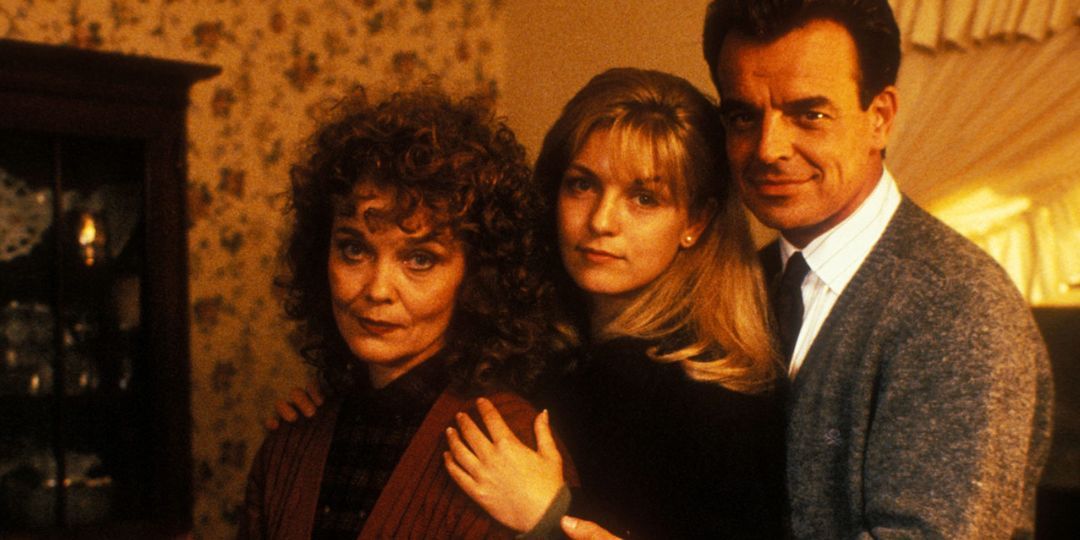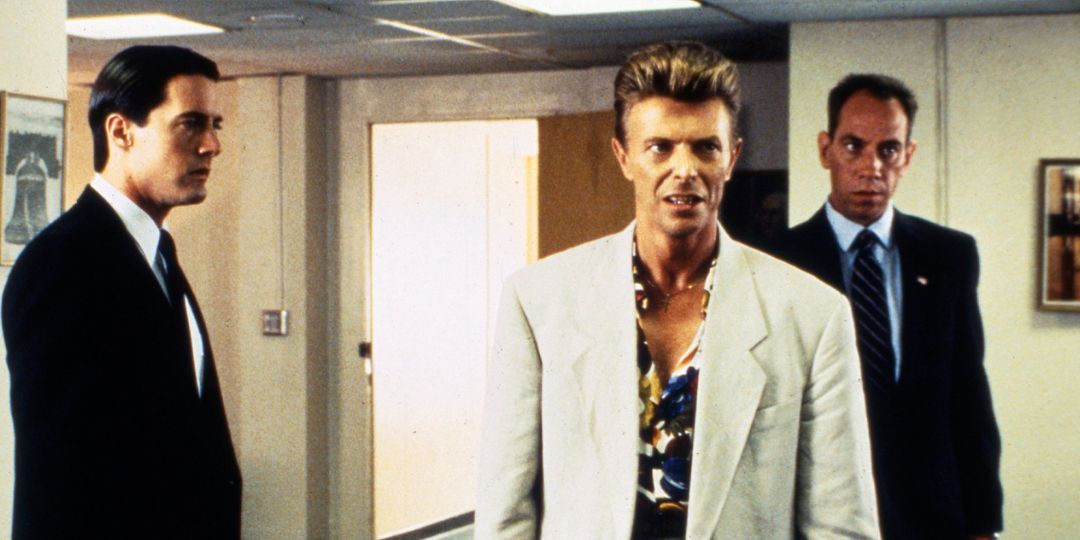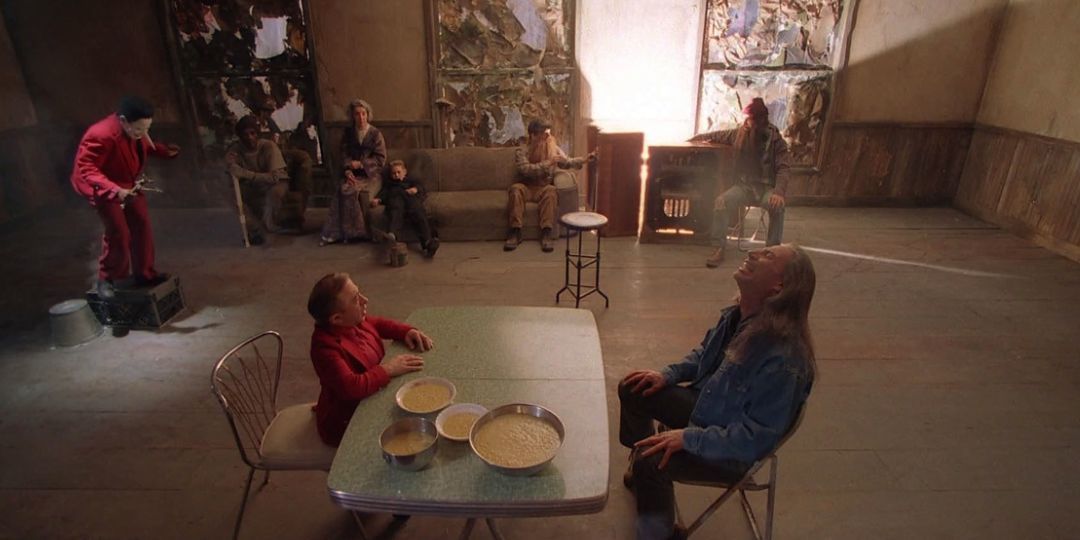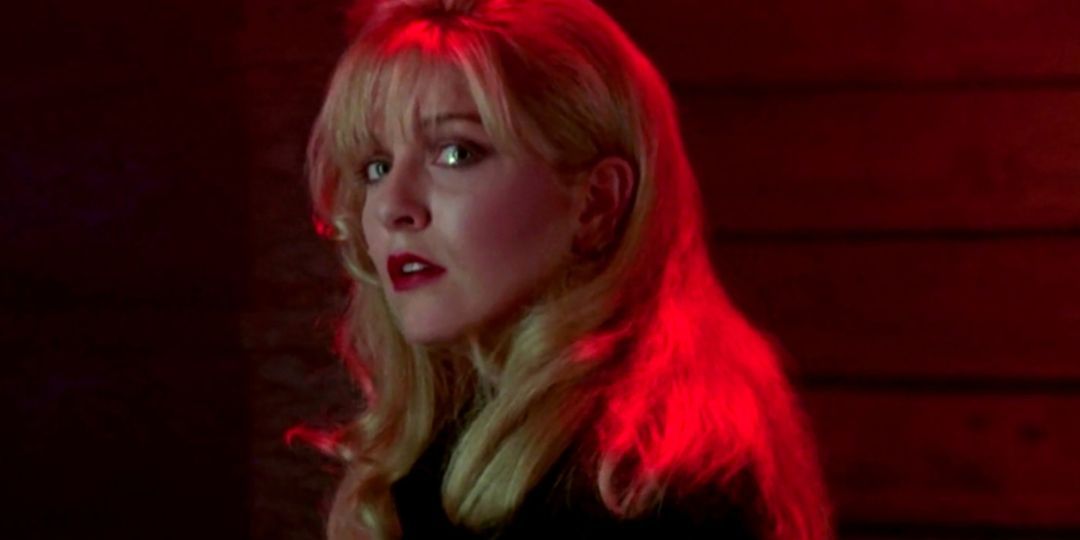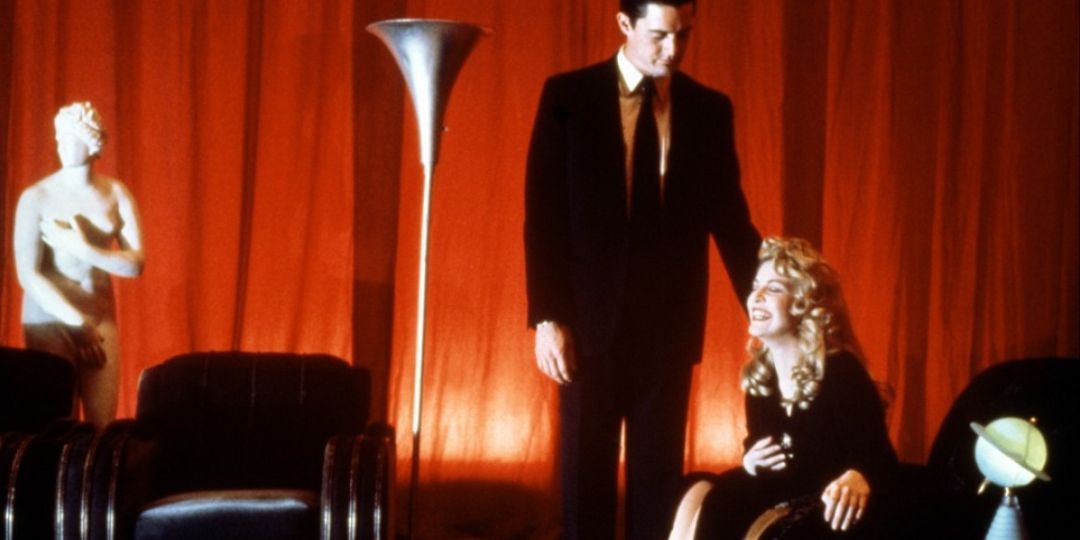A prequel to David Lynch and Mark Frost’s groundbreaking television series Twin Peaks (1990–1991), Twin Peaks: Fire Walk With Me (1992) is a psychological horror film. Even those who aren’t familiar with the original series might remember its clever hook: Who killed Laura Palmer? Directed by Lynch, Fire Walk With Me chronicles the last seven days of Laura Palmer’s (Sheryl Lee) life, allowing viewers the chance to see the Laura so many people (supposedly) knew.
The prequel film’s prologue also touches on the investigation into the murder of Teresa Banks (Pamela Gidley) in 1988. In the series, Banks’ death plays a central role in informing Special Agent Dale Cooper’s (Kyle MacLachlan) investigation into Laura’s death. A box office failure in the United States, Fire Walk With Me polarized critics and everyday viewers alike. Lynch’s co-writer on the film, Robert Engels, denies the long-reported rumors that the Palme d'Or-nominated film was booed at Cannes Film Festival. Still, whether true or not the anecdote still colors the legacy of Twin Peaks: Fire Walk With Me.
Over 30 years later, the film has been reevaluated by both reviewers and Twin Peaks fans. Fire Walk With Me recenters Laura Palmer, reaffirming that the teenager is the story’s protagonist. As the Log Lady says, “It is a story of many, but it begins with one. The one leading to the many is Laura Palmer.” Here, Laura isn’t just a body, “dead, wrapped in plastic,” but a vibrant, active person who’s also navigating unimaginable trauma. So, why did Fire Walk With Me receive such hate when it was originally released? And what does it mean for the larger Twin Peaks story?
Why Was Fire Walk With Me Hated?
Although it now stands alongside some of David Lynch’s most definitive projects, like Eraserhead (1977), Blue Velvet (1986), and Mulholland Drive (2001), Twin Peaks: Fire Walk With Me wasn’t hailed as a masterpiece in its time. So, how did Lynch’s uncompromising film, which combines psychological horror with an adept character study, fail to captivate audiences back in 1992? And, more than that, why did it receive so much hate?
Any time a creator returns to a beloved series or franchise, there are bound to be upset fans. (even if David Bowie is involved.) And even though Fire Walk With Me came right on the heels of Twin Peaks, this holds true here. The titular town — a small Pacific Northwest community that’s as full of secrets as it is trees — became something of a character itself.
Not to mention, the eclectic inhabitants of Twin Peaks made the show something of an ensemble effort. From the mysterious Log Lady (Catherine E. Coulson) and the ardent-yet-headstrong Audrey Horne (Sherilyn Fenn) to the peculiar inhabitants of the Black Lodge to kind-hearted Double R Diner owner Norma Jennings (Peggy Lipton), these characters not only added texture to the town of Twin Peaks (and the show itself), but they all had engaging storylines viewers kept up with week-to-week.
In narrowing its focus, Fire Walk With Me eliminated the sprawling feel of the series. Sheryl Lee, who plays Laura in a career-best performance, carries almost every scene because, prologue aside, she’s the focal point of almost every scene. For some viewers, this change in scope felt a bit disappointing. Dale Cooper, Kyle MacLachlan’s charming FBI agent at the heart of the series, is reduced to a cameo appearance in the prologue. While that makes narrative sense — it’s a prologue, after all, so Coop doesn’t really have a place in Laura’s story yet — that doesn’t mean fans were pleased at the time.
But, perhaps more than anything, Fire Walk With Me is tonally very different from the show. Known for uncannily blending horror, detective fiction, and the supernatural with quirky humor and the tropes of melodramatic soaps, Twin Peaks juggles a lot, giving space for viewers to find a tone or aspect they really love. Fire Walk With Me, on the other hand, is incredibly dark. Aside from a cringey line or two, there’s nothing humorous here. In fact, watching Twin Peaks: Fire Walk With Me can be a harrowing experience. And while that works for the story Lynch is telling, it likely caught fans off-guard when the movie debuted.
Is Fire Walk With Me Good?
Decades after its initial release, Twin Peaks: Fire Walk With Me is considered a masterwork in Lynch’s impressive portfolio. The darker feel of the film even informed the 2017 series Twin Peaks: The Return — a third season of sorts that picks up 25 years after the events of the show. In addition to borrowing a darker, more violent tone, The Return also expands up the show’s mythology. That deeper look at the strange, supernatural lore is also what helps Fire Walk With Me stand out.
While the series certainly had its share of strange moments — Cooper’s dreams of the Black Lodge’s Red Room, the continued appearance of The Giant (Carel Struycken), and the Log Lady’s prophetic speeches, for starters — it wasn’t until the last few episodes that it really embraced the lore surrounding BOB’s origins and the existence of the Black Lodge. David Lynch’s Fire Walk With Me is determined to look these elements of the surreal, of the otherworldly, square in the face.
Plus, Fire Walk With Me provides more pieces of the larger decades-spanning mystery at hand. For example, in one scene Annie (Heather Graham), Norma’s sister and Cooper’s late-Season 2 love interest, appears to Laura and tells her to write in her diary: “The good Dale is in the lodge and can’t leave.” This, of course, foreshadows the end of the show’s original run, and sets up Twin Peaks: The Return. If you love decoding all Lynch puts in front of you, Fire Walk With Me will be right up your alley.
Beyond all the Twin Peaks wiki fodder, Fire Walk With Me never forgets that it's a character study. Although BOB is a very real entity who has possessed Leland Palmer (Ray Wise), Laura’s father, the film also maintains that Laura has been suffering sexual and psychological abuse for years at the hands of her father. Like in the show, the long-haired, denim jacket-wearing BOB (Frank Silva) sneaks into Laura’s room, snarling. He is meant to be the personification of evil, ever-lurking and ever-present. But BOB might also be a shared delusion. Leland has been raping Laura for years; instead of either one of the characters accepting this horrific truth, maybe it’s just easier to blame an entity that possesses people and makes them commit heinous acts.
Watching the movie is not just challenging, but exhausting. And it should be that way, given the cruelty it shows us. Once we’re aware of the abuse and darkness she holds and hides, it’s clear that Laura’s homecoming queen smile is plastered on — empty. Another facade. In Fire Walk With Me, Lynch draws us into the deepest parts of Laura’s experiences — this unrelenting, humorless, and bleak world of violence. As such, the terrifying truth of Fire Walk With Me is that everyone has the capacity to commit untold evil. Peel away the small-town, nuclear-family, homecoming-queen facades, and it’s there — waiting.
Fire Walk With Me, Explained
In the series, the phrase “fire walk with me” comes from a poem of sorts: “Through the darkness of future past/ The magician longs to see./ One chants out between two worlds/ Fire walk with me.” As with much of Lynch’s messages, the true meaning of “fire walk with me” is up for debate. At times, it seems like a chant that’s used by inhabitants of the Black Lodge to cross the portal between our world and this adimensional space. When Leland recites the phrase, it feels like an invitation — he’s willingly allowing evil to control his actions.
Twin Peaks: Fire Walk With Me Ending, Explained
Watching the last night of Laura’s life unfold is incredibly painful — especially since we know how the murder will unfold thanks to Agent Cooper’s detective work in the series. Plus, Lynch’s superb direction and Lee’s Oscar-level performance make the ending work all the better.
After ending her relationship with James Hurley (James David Greenblatt), an erratic Laura jumps off his motorcycle and flees into the woods to meet with trucker-turned-narcotics-trafficker Leo Johnson (Eric Da Re); Roadhouse bartender and One-Eyed Jack’s card deal Jacques Renault (Walter Olkewicz); and another underage sex worker, Ronette Pulaski (Phoebe Augustine). In a cabin in the woods, they all have sex and snort cocaine — until Leland shows up and beats Jacques to near-death while Leo flees the scene. Leland then drags the girls to a nearby abandoned train car, and, now appearing as BOB, tells Laura he wants to be her.
Then, MIKE appears. A former associate of BOB’s, MIKE (Al Strobel) is a spirit who can also inhabit a human host. However, MIKE parted ways with the devilish BOB, cutting off his own arm, which was tattooed with the phrase “Fire walk with me” — a nod to walking with the devilish BOB. That said, MIKE has been trying to thwart BOB, and manages to pull an unconscious Ronette to safety.
MIKE then tosses the series’ infamous ring — a gold band with a jade setting that’s inscribed with a petroglyph and which, seemingly, can transport the wearer to the Black Lodge’s waiting room. The ring lands in the train car, and Laura, having seen it in dreams before, puts it on. A furious BOB kills Laura and dumps her body in the river. That catches the story up to the pilot of Twin Peaks, but it’s also when things get a bit more complicated.
BOB travels to the Red Room where MIKE and the Man From Another Place (Michael J. Anderson) — an inhabitant of the Black Lodge who was born from MIKE’s severed arm — are waiting. The two demand BOB give them “garmonbozia” — that is, a manifestation of pain and suffering. (In other scenes in the series, garmonbozia takes the form of creamed corn.) Leland floats beside BOB, an empty puppet waiting for a command.
Laura’s body is discovered on the riverbank the next morning, as all fans of the series know, but — meanwhile — in the Red Room, Dale Cooper comforts Laura. Above her, an angel floats, hands clasped. Laura cries, unable to stop, but she’s smiling the whole time. Tears of joy? Maybe. Instead of letting BOB take over, Laura found a way out — albeit a gruesome one. Or maybe the joy in Laura’s ending is knowing that the existence of great evil also means the existence of great goodness, too. It’s hard to know exactly where Fire Walk With Me lands, but, as Cooper would say, the iconic film takes us to a place both wonderful and strange.


